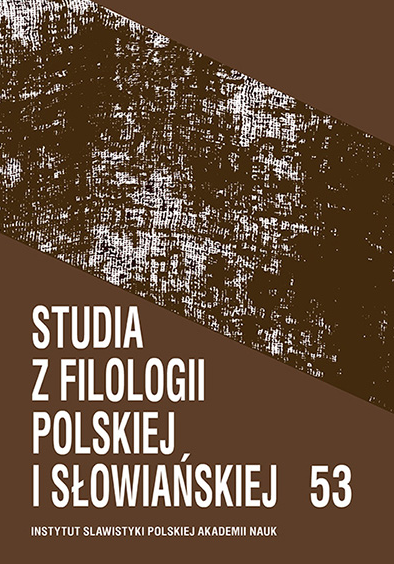Kilka uwag o rozwoju wtórnych przyimków przestrzennych
Some remarks about the development of secondary spatial prepositions
Author(s): Aleksandra JanowskaSubject(s): History, Language and Literature Studies, Historical Linguistics, Western Slavic Languages
Published by: Instytut Slawistyki Polskiej Akademii Nauk
Keywords: secondary prepositions; spatial relations; history of the Polish language; language evolution;
Summary/Abstract: The literature devoted to spatial prepositions is quite abundant. The present article constitutes a recapitulation of the historical research which has heretofore been done on the subject. It is also an attempt at presenting the general characteristics of the evolution undergone by the class of units being described. This class is treated here in a broad manner, taking into account also equivalence. Spatial prepositions are the oldest layer of secondary forms and as far as many aspects are concerned, they constitute a very peculiar group. The attention of the scholar is drawn to lexemes such as blisko [close to, near] and the complex prepositions such as zza, poza, spoza [from behind, beyond, from beyond], which emerged quite late. Properties which are important for the evolution of the prepositions in question also include the considerable number of their variants. The direction of their evolution is quite clear also as far as their functions are concerned. The Polish language inherited from the Proto-Slavonic language precise distinctions of proximity, in contradistinction to the ablative content or expressions of considerable distances, which are indicated in a relatively general manner. The development of secondary prepositions emphasizes these properties of spatial description even further. As years went by, the disproportion between the indications of approaching and departing, of being near and being far away, did not diminish. On the contrary, it increased. The peculiarity of secondary prepositions is determined by their relationship with other classes of words that also describe spatial relations. Without doubt, this mutual relationship, which determines the evolution in spatial description, requires in-depth research.
Journal: Studia z Filologii Polskiej i Słowiańskiej
- Issue Year: 2018
- Issue No: 53
- Page Range: 43-58
- Page Count: 16
- Language: Polish

